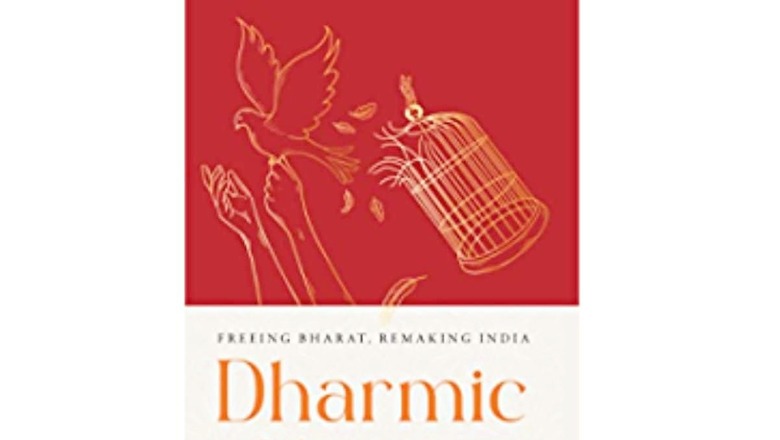
views
The past few years have witnessed several debates in the public domain on how India should be imagined and governed. Dharmic Nation reflects the Hindutva perspective in this debate and forms part of a new body of work that in recent times have challenged the relevance of secularism to the Indian polity.
The book spans across 18 chapters including the introductory chapter which foregrounds the foundational assumptions and key arguments of the author. The introduction provocatively sets the stage by declaring that the book is a call to all Indians, including Muslims and Christians, ‘the two non-dharmic creeds in our midst’ to rediscover the path of ‘dharma’ by ‘unshackling’ themselves from the burden of colonial idea. The remaining chapters build on this key theme and cover a variety of themes that range from the ideas of Hindu Rashtra and Hindutva, to questions of jati and varna in Hinduism, on why Hinduism should become a missionary religion to questions of secularism, religious freedom and state control over temples.
In the author’s own words, the core argument of the book is that the “negativity to Hindu religious freedoms and protection of Hindu Rights cannot be undone without an explicit commitment to dharmic nationhood or a Hindu Rashtra”. This underlying theme that pervades all the chapters therefore is the inadequacy of the political doctrine of secularism and how the adoption of Hindu dharmic principles by all citizens, including religious minorities, can “create a new kind of Bharat” that will be more enduring.
The book, however, does not reject the idea of constitutionalism but rather argues that even the founders of India’s Constitution subtly underscored the idea of a civilizational state. In chapter 4, this argument is further developed by drawing attention to Article (1) of the Constitution which uses the expression ‘India, that is Bharat’ and the illustrations of Hindu epic heroes and Hindu motifs in the original copy of the Constitution document. The author, however, quickly adds that this idea of a civilizational states sits uneasily with the ideas of ‘liberty’, ‘equality’ and ‘fraternity’ and laments the absence of words like ‘dharma’, ‘ahimsa’, ‘artha’, ‘satya’ etc. that he feels are integral to the Indic civilization. He also suggests that another problem with the Indian Constitution is that it was conceived and written in a foreign language, i.e. English and it is therefore difficult to embed its values in a society that has its own myriad ways of expression.
The book spends a fair amount of time in explicating the ideas of Hindutva, Hinduism and Hindu Rashtra and argues that they are deeply connected to each other. In chapter 2, the author mentions that much of the book attempts to respond to a challenge thrown by Vir Sanghvi several years ago in one his columns to Hindutva supporters; i.e. to provide a ‘what-if’ book on what would India have been like if it had indeed become a Hindu Rashtra in 1947. The author argues that contrary to its critics, a Hindu Rashtra would be committed to respecting plurality and diversity as these are a ‘defining feature of Hinduism and not just a gift of our Constitution’.
By the author’s own admission, the book was written in different stages, primarily as a response to several events that unfolded in the last one decade. It is therefore dotted with references to contemporary events, controversial court judgments and cultural movements in India and elsewhere which are used as primary evidence to support the claims made by the author.
What is particularly interesting to note through this book is how the author uses the earlier set of premises that form Hindutva’s core to respond to contemporary criticisms and apprehensions regarding this ideology. The book therefore is important for scholars interested in understanding Hindutva’s evolution from being a self-contained and marginal idea to one that has metamorphosed into a more complex and centre-stage idea that is cognizant of the primary discomforts that secularists have expressed against it.
The book’s primary strength lies in the fact that it avoids academic jargons and frameworks and is fairly accessible to the mass reader. It could, however, benefit from some restraint in its tenor, especially in those parts where the author unabashedly uses sweeping generalizations to attack Abrahamic faiths, ‘woke-liberals’ and ‘secularists’.
The book ‘Dharmic Nation’ is written by R Jagannathan (Rupa Publications).
Malini Bhattacharjee teaches at Azim Premji University and is interested in Hindu nationalism and the interplay between religion and development. The views expressed are personal and do not represent the stand of this publication.
Read all the Latest Opinions here




















Comments
0 comment